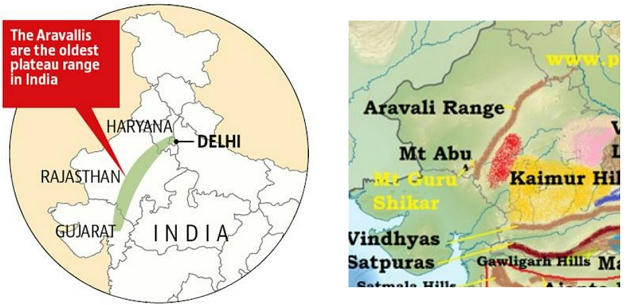At an event held in Tikli Village, Haryana to commemorate the International Day of Forests, the Union Minister for Environment, Forest and Climate Change, Bhupender Yadav, unveiled the Aravalli Green Wall Project, which aims to green the 5 km buffer area around the Aravalli Hill Range in four states.
Buy Prime Test Series for all Banking, SSC, Insurance & other exams
About Aravalli Green Wall Project:
- The Aravalli Green Wall Project is a significant undertaking aimed at afforesting the 5 km buffer zone around the Aravalli Hill Range in Haryana, Rajasthan, Gujarat and Delhi.
- The project is part of the Union Environment Ministry’s efforts to create green corridors throughout the country to combat land degradation and desertification.

- The initiative will involve planting native species of trees and shrubs on wasteland, scrubland, and degraded forest land.
- Additionally, the project will focus on rejuvenating and restoring surface water bodies, such as ponds, lakes, and streams, as well as agroforestry and pasture development to improve the livelihoods of local communities.
- The Project has multiple objectives, such as improving the ecological health of the Aravalli range, creating green barriers to prevent soil erosion, desertification, and dust storms, and contributing to India’s commitments under international conventions such as UNCCD, CBD and UNFCCC.
Key facts about the Aravalli Hills:

- The Aravalli Range, running southwest from near Delhi and passing through southern Haryana and Rajasthan before terminating in Gujarat, is one of the world’s oldest fold mountains.
- The range’s highest peak, Guru Shikhar, reaches a height of 1,722 metres (5,650 ft).
- The Aravalli Hills are the source of three significant rivers – Banas, Sahibi, and Luni River, which flows into the Rann of Kutch.




 Weekly One Liners 15th to 21st of Decemb...
Weekly One Liners 15th to 21st of Decemb...
 World Basketball Day 2025 Celebrates Bas...
World Basketball Day 2025 Celebrates Bas...
 UN Celebrates Second World Meditation Da...
UN Celebrates Second World Meditation Da...







